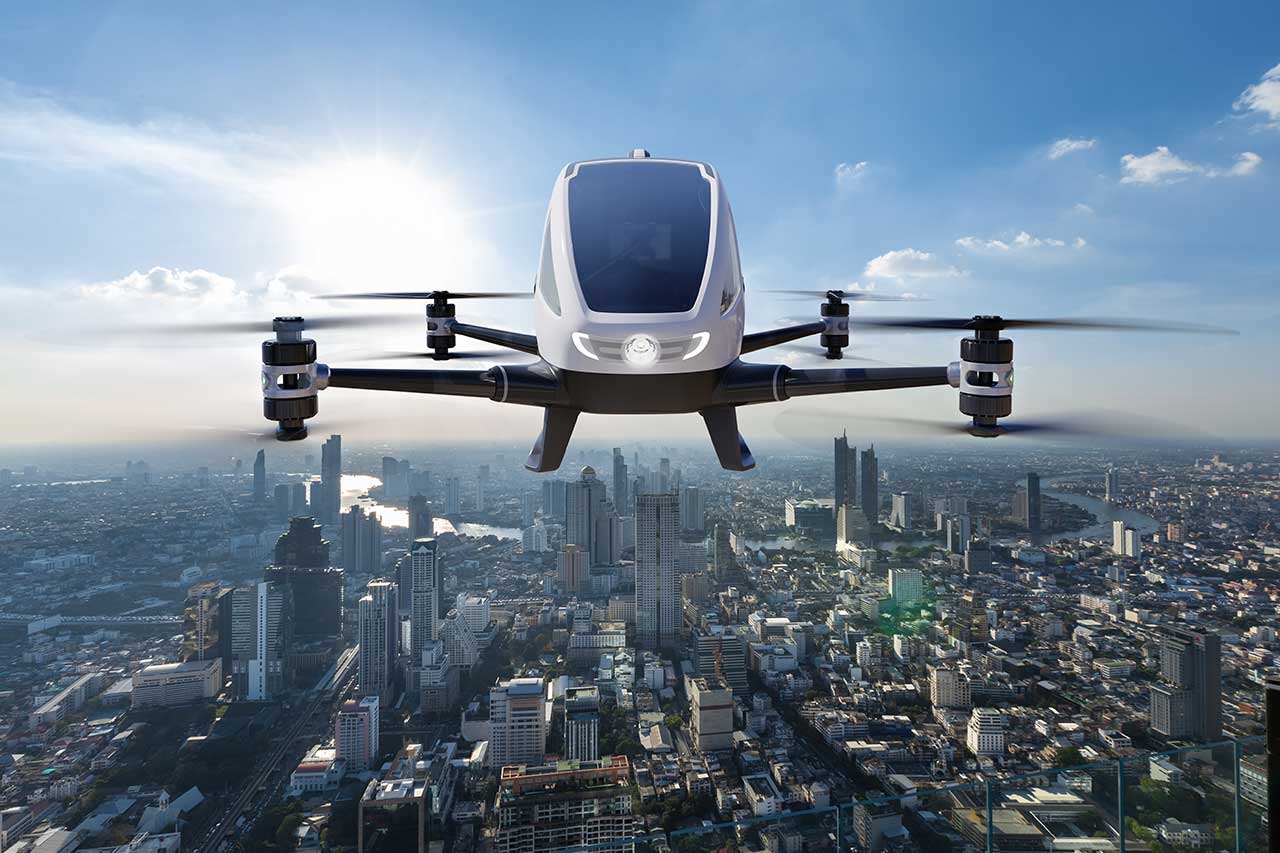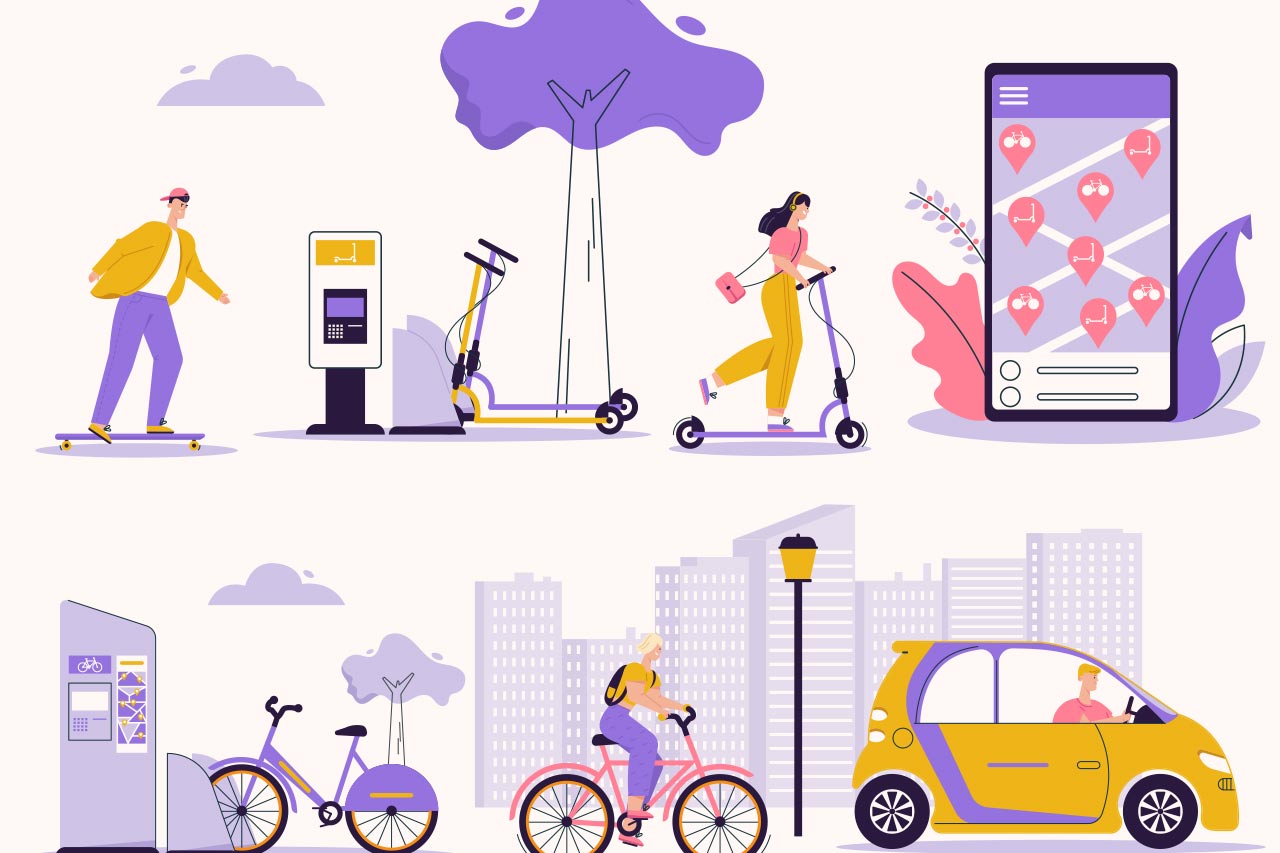First challenge: better define the use cases of VTOLs
VTOLs could be a more ecological alternative to cars for long distances.
A study led by Ford and the University of Michigan shows that, for a 100 km trip, the emissions of a VTOL (including 3 passengers and a driver) are 52% lower than those of a gasoline-powered car (with an average of 1.54 people on board) and 6% lower than those of an electric car.
On the other hand, for short trips (< 35 km), this eVTOL pollutes more than a gasoline-powered vehicle. This is an important consideration when one knows that journeys of more than 35 km represent only 15% of all journeys.
There is thus a real work to be done to define the use cases of future VTOLs by considering their environmental impact. Ideally, VTOL should be used as a public transport system rather than an individual mean of transport (like cars), and if possible, it should be subject to minimum distance restrictions. In terms of passenger experience, it will also be necessary to work on a consistent interface between VTOLs and other means of transport (First/Last Mile management).
You want to know more about the challenges of the professional drone market ?
Check out our Drones page >
Second challenge: reduce the environmental footprint of VTOLs over the entire life cycle of the equipment
The emissions produced using VTOLs should not be the only point of concern. VTOLs also have direct environmental impacts throughout their life cycle. The raw materials used, the manufacturing, maintenance and recycling processes are all potentially polluting stages to be monitored.
For a better optimization of VTOLs, some actors have chosen to turn to the use of very light materials, such as carbon fibre, which remains a real challenge from an environmental point of view. Indeed, while their use allows to reduce the in-flight consumption of VTOLs, these materials are currently difficult to recycle. For instance, for carbon fibres, the traditional recycling processes are relatively polluting or energy intensive. Many actors, like Alpha Recyclage, are currently developping new promising processes, such as the vapo-thermolysis. However, these techniques are relatively new and still need to prove themselves.
At the same time, players who have turned to electric propulsion (using car-like batteries), also need to define a circular economy strategy around recycling in order to reduce their environmental impact and differentiate themselves.
It is likely that more and more players will take this turn to battery recycling. This is the case of Renault, which has just announced a partnership with Veolia and Solvay to create a pilot plant in France to recycle in a closed loop the metals contained inside electric batteries.
VTOLs also have indirect impacts on the environment. For example, their use requires the construction of infrastructures such as landing platforms, which has an environmental impact.
Third challenge: using renewable energy to recharge eVTOLs
The electric propulsion of eVTOLS does not directly emit carbon. However, the origin of the electricity that powers them deserves special attention. In Europe, in 2019, the environmental cost of producing one kWh of electricity was on average 275g of CO2/kWh. The way electricity is produced has a huge impact on this figure. An eVTOL powered by solar electricity will have much less environmental impact than the European power production CO2 impact average (about 55g CO2/kWh).
However, it seems difficult to choose the source of one’s electricity, unless one produces it locally. Could the solution be to install solar panels on the landing platforms, where the batteries of the eVTOLs are charged? This is a bet taken by the company Avy, which has equipped the wings of its zero-emission solar drone with photovoltaic cells. Solar energy as the future of renewable energy for VTOLs?
Fourth challenge: reducing noise and visual pollution from VTOLs
Beyond all these environmental issues that need to be well understood, noise and visual pollution generated by VTOLs also represent future challenges. The social acceptability of VTOLs depends on this, and currently, relatively few solutions are emerging. However, we can mention Lilium, which is trying to reduce noise pollution during take-off and landing with its eVTOL with electric propulsion and lift.
The environmental issues related to VTOLs are numerous! To make VTOLs a sustainable mobility solution, 4 key challenges have been identified:
- Better define the use cases for VTOLs, for example by prioritizing their use on long journeys.
- Reduce the environmental footprint of VTOLs over the entire life cycle of the equipment, by improving the direct and indirect impacts of VTOLs on the environment.
- Use renewable energies to recharge eVTOLs, by taking into account the proximity of the source.
- Reduce noise and visual pollution of VTOLs, by designing appropriate technologies and traffic regulations.
Some players are already addressing these issues by taking them into account in their design choices. By anticipating their environmental impacts at a very early stage, and by working on their minimization, these players are anticipating the constraints of social acceptability that could arise, thus stacking all the odds in their favor to meet their market. What about you? Let’s explore together your uncharted territories on this innovative market, while identifying green opportunities for you and for our planet!
*Inspired by the strategic approach advocated by W. Chan Kim and Renée Mauborgne in 2004, with the notions of red and blue oceans, a “green ocean” means the need to integrate environmental issues (e.g. CSR, circular economy, eco-design) into your blue ocean. The green ocean would therefore represent a differentiation through sustainable development and the fact of taking up these challenges.
About the authors,
Astrid, Business Development Manager, Steffen, Senior Consultant and Maxence, Consultant in Alcimed Aerospace-Defence team in France



